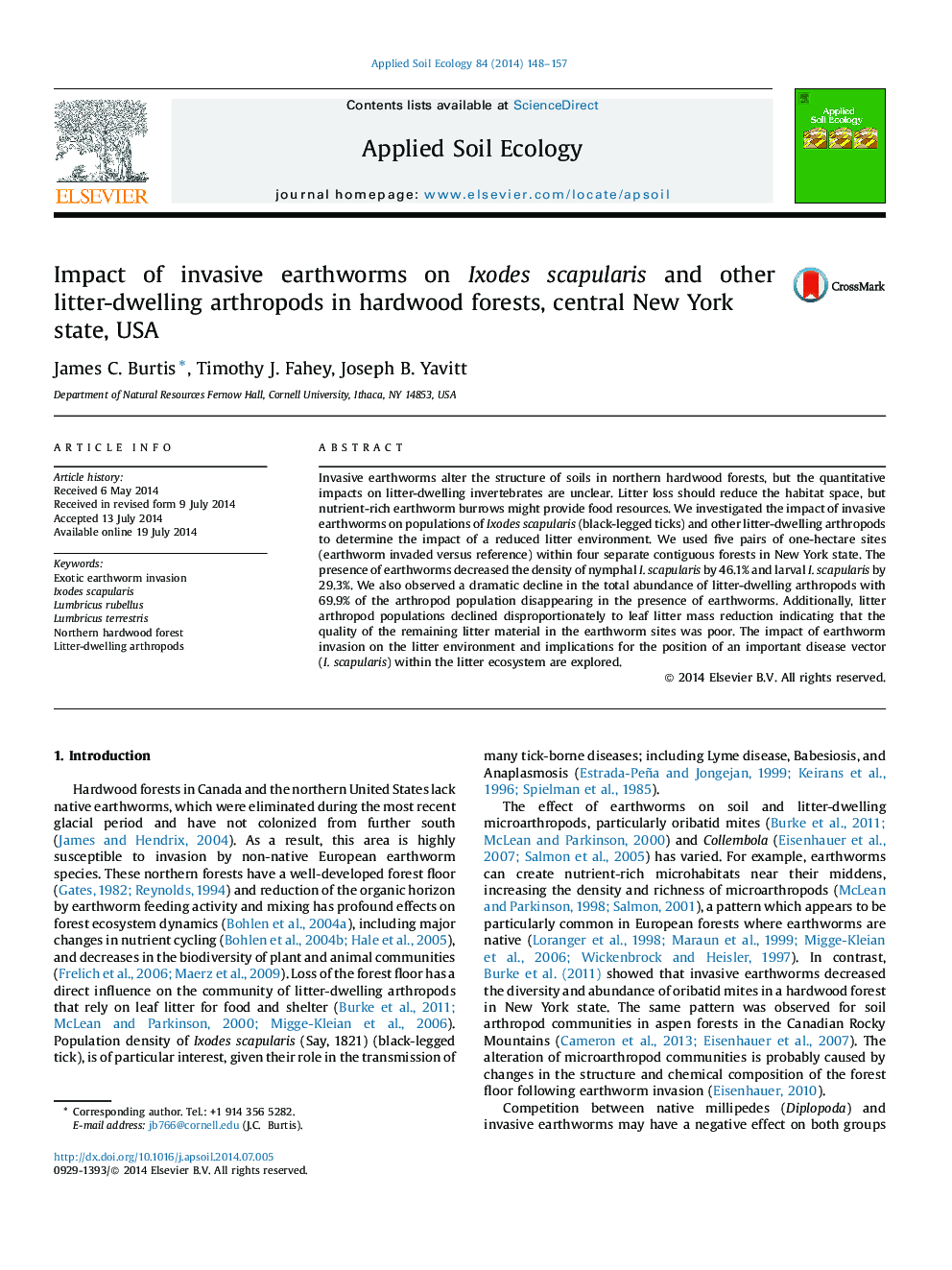| Article ID | Journal | Published Year | Pages | File Type |
|---|---|---|---|---|
| 4382176 | Applied Soil Ecology | 2014 | 10 Pages |
Abstract
Invasive earthworms alter the structure of soils in northern hardwood forests, but the quantitative impacts on litter-dwelling invertebrates are unclear. Litter loss should reduce the habitat space, but nutrient-rich earthworm burrows might provide food resources. We investigated the impact of invasive earthworms on populations of Ixodes scapularis (black-legged ticks) and other litter-dwelling arthropods to determine the impact of a reduced litter environment. We used five pairs of one-hectare sites (earthworm invaded versus reference) within four separate contiguous forests in New York state. The presence of earthworms decreased the density of nymphal I. scapularis by 46.1% and larval I. scapularis by 29.3%. We also observed a dramatic decline in the total abundance of litter-dwelling arthropods with 69.9% of the arthropod population disappearing in the presence of earthworms. Additionally, litter arthropod populations declined disproportionately to leaf litter mass reduction indicating that the quality of the remaining litter material in the earthworm sites was poor. The impact of earthworm invasion on the litter environment and implications for the position of an important disease vector (I. scapularis) within the litter ecosystem are explored.
Related Topics
Life Sciences
Agricultural and Biological Sciences
Ecology, Evolution, Behavior and Systematics
Authors
James C. Burtis, Timothy J. Fahey, Joseph B. Yavitt,
